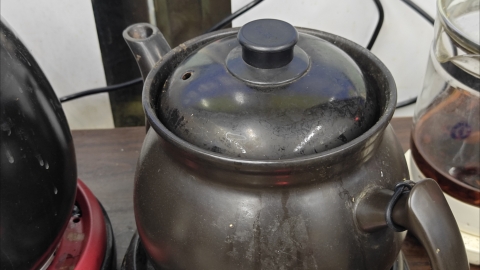What are the best herbal medicine formulas for removing dampness?
Generally speaking, there is no such thing as a best formula, as the effects of traditional Chinese medicine (TCM) prescriptions usually vary from person to person. Common TCM formulas include Erchen Tang, Linggui Zhugan Tang, Sanren Tang, Pingwei San, and Huoxiang Zhengqi San. Detailed descriptions are as follows:

1. Erchen Tang: Composed of Pinellia, Tangerine Peel, Poria, and Licorice, this formula dries dampness, resolves phlegm, regulates qi, and harmonizes the middle jiao. It is suitable for cough with excessive phlegm, chest and epigastric distension and oppression, nausea, and vomiting caused by internal retention of phlegm-dampness, improving dampness accumulation within the body by drying dampness and resolving phlegm.
2. Linggui Zhugan Tang: Contains Poria, Cinnamon Twig, Atractylodes, and Licorice. It warms yang to transform fluid retention and strengthens the spleen to drain dampness. It is suitable for internal accumulation of phlegm-fluid due to insufficient middle jiao yang, with symptoms such as fullness in the chest and hypochondrium, vertigo, palpitations, shortness of breath, and cough. It warms and transforms dampness while strengthening the spleen.
3. Sanren Tang: Composed of Apricot Seed, Cardamom Seed, Coix Seed, Magnolia Bark, and others, this formula regulates qi circulation and clears damp-heat. It is suitable for damp-warmth at its initial stage or summerheat-warmth with dampness where dampness predominates over heat. It alleviates symptoms like headache with aversion to cold, body heaviness and pain, chest oppression with poor appetite, and so on.
4. Pingwei San: Contains Atractylodes, Magnolia Bark, Tangerine Peel, and Licorice. It dries dampness, strengthens the spleen, regulates qi, and harmonizes the stomach. It is suitable for syndromes of dampness stagnation in the spleen and stomach, improving symptoms such as abdominal distension, loss of appetite, nausea, vomiting, belching, and acid regurgitation caused by dampness obstructing the spleen and stomach.
5. Huoxiang Zhengqi San: Composed of Agastache, Perilla, Angelica Root, Poria, and others, this formula resolves exterior patterns, transforms dampness, regulates qi, and harmonizes the middle jiao. It is suitable for exterior contraction of wind-cold and interior injury from dampness stagnation, alleviating symptoms such as cholera with vomiting and diarrhea, chills and fever, headache, and chest and epigastric fullness and oppression, harmonizing exterior and interior dampness.
When using TCM formulas for removing dampness, selections should be made according to individual symptoms and constitution under the guidance of qualified professionals. Self-prescription and medication are not recommended. During treatment, maintain a bland diet and avoid greasy and cold foods, which may interfere with the efficacy of the medicine. If symptoms do not improve or worsen after taking the medicine, promptly consult a professional to adjust the treatment plan.




